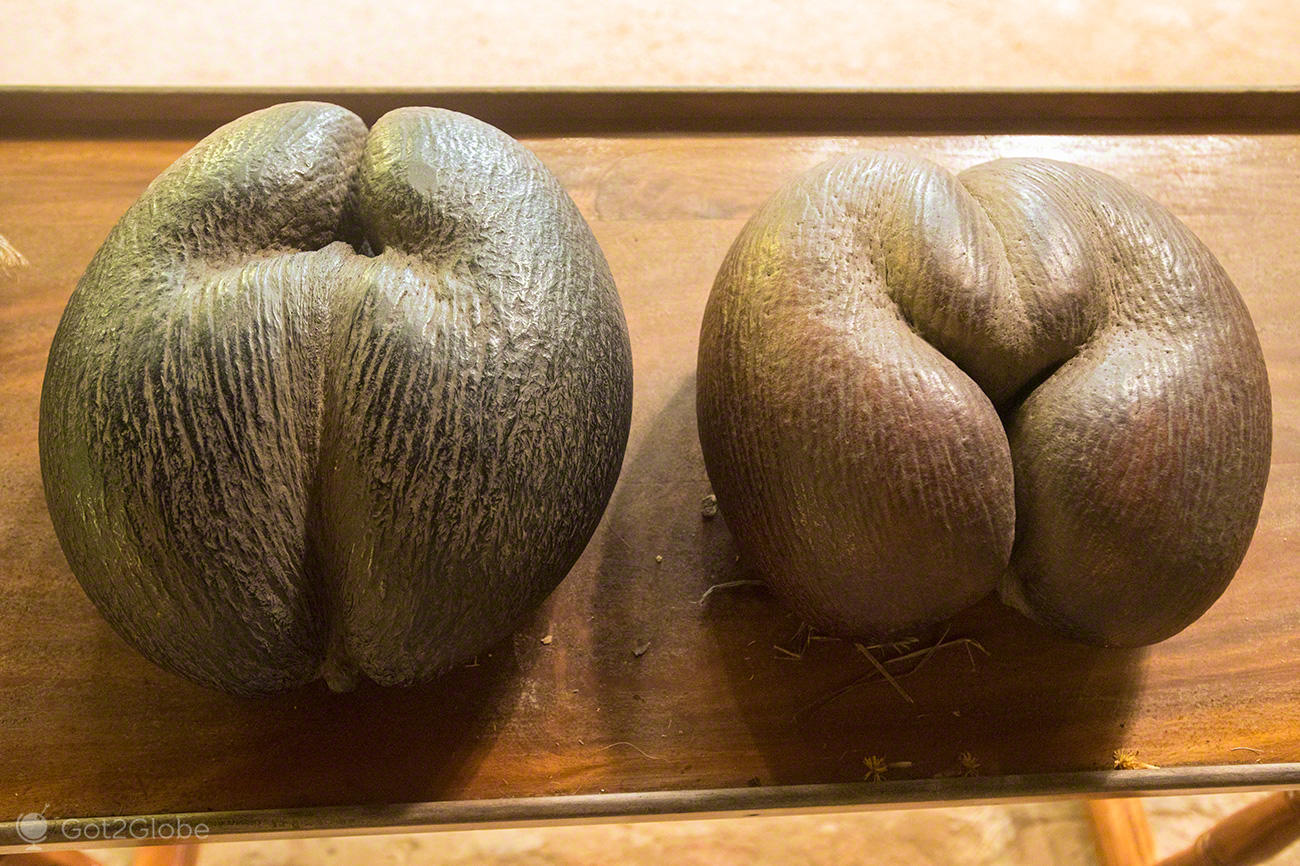
Double coconut: The largest seed in the world
In the islands of Praslin and Curieuse, in the Seychelles, grows one of the most exclusive palm trees in the world. The coco de mer (Lodoicea maldivica) has tall slender trunks that rise more than 30 meters above the ground. At its crown is a mass of fronds, with leaf blades fanning out nearly five meters across. On mature individuals, the leaves are often fringed at the edges. Their withered ends hang from the palm below the vibrant, healthy green crown.
Possibly the most renowned feature of coco de mer are its enormous seeds—the largest and heaviest seeds in the plant world. But it is the shape and not the size of the seeds, that makes coco de mer famous; the seeds bear an uncanny resemblance to a woman’s butt. Indeed, one of coco de mer’s archaic botanical name was Lodoicea callipyge, where callipyge in Greek means “beautiful buttocks”.
On the beautiful islands of the Seychelles in the Indian Ocean grows a legendary palm. Lodoicea maldivica, also known as the double coconut, or coco-de-mer, is renowned for producing the largest and heaviest seeds in the world.With their rather suggestive shape and weighing up to an impressive 25kg, while measuring up to half a metre long, these spectacular seeds are attractive to scientists, tourists and poachers alike.
Legend has it that the double coconut possesses medicinal properties. Although these “healing powers” remain unproven, the palm remains of high interest as an aesthetic wonder, with single nuts currently sold for £500-£2,000.



